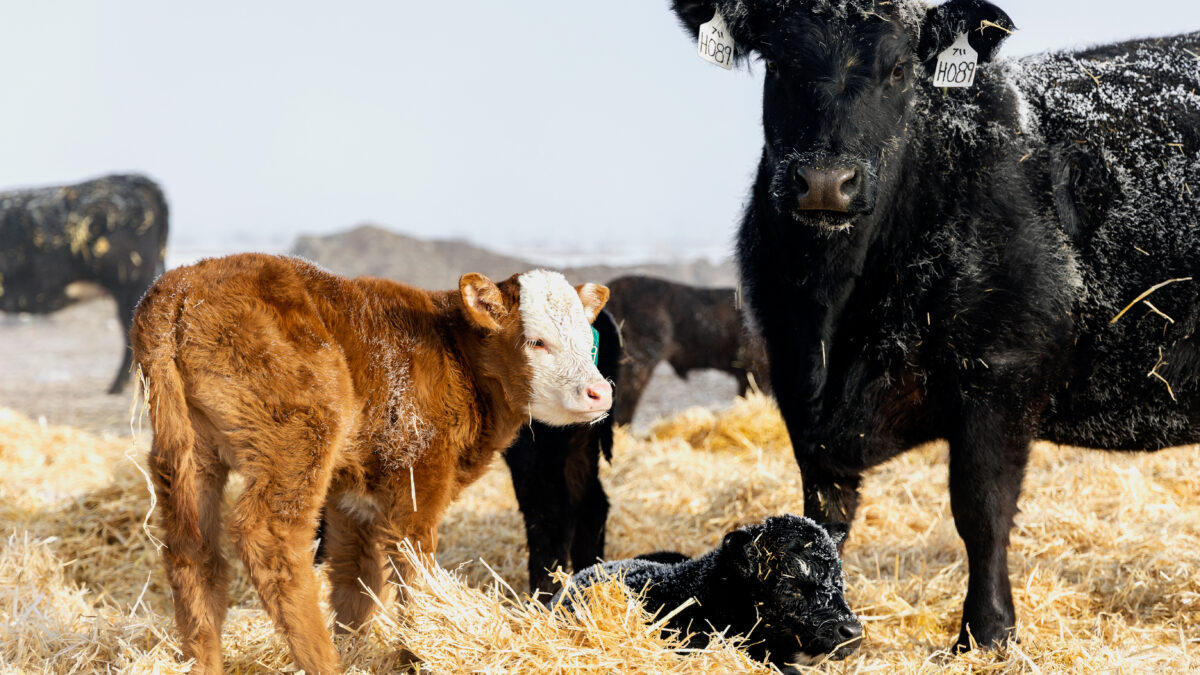Farmers and Ranchers Are Committed to the Long Game
Guest Author
Special Contributor to FB.org

photo credit: Colorado Farm Bureau, Used with Permission
Guest Author
Special Contributor to FB.org
As a fourth-generation farmer and rancher, you could say farming and ranching runs deep in my veins. My ancestors were farmers and ranchers in Germany and Russia before coming to the U.S., and my family still farms the land my great-grandfather homesteaded back in 1907. We grow wheat, safflower, millet, corn and alfalfa and raise beef cattle in western South Dakota. Our cattle ranching gets the most interest from folks these days. I often hear questions about how beef is raised and whether it 's sustainable. I 'm proud of the work my family has been doing for generations to produce quality food and keep our ranch sustainable for more than a century now.
Is Beef Sustainable?
Yes. We are committed to raising strong, healthy animals and protecting our land and water. On our ranch, we have implemented conservation practices that increase our productivity while conserving our natural resources.
On our family ranch, we run what 's called a cow/calf enterprise, where we care for approximately 150 momma cows year-round. They are bred to calve each spring, and then raise their calves during the summers and into early fall. When we wean the calves in November, the males (steers) are sold, and we keep all the females (heifers) to eventually replace the older cows of our herd.
When my father started ranching in the early 1960s, he would wean and sell calves that weighed 300 pounds. Today, we are weaning and selling calves that weigh 500 to 600 pounds. How is this possible? Through careful breeding and conservation practices. Every year we evaluate our momma cows ' performance and health, and we breed them to select bulls to improve the quality of our herd.
We have also taken on conservation practices that are good for our animals and our land. We worked with our local Natural Resources Conservation District to develop grazing plans and manage water. By rotating the fields our cattle graze in and developing water sources that conserve energy, we are providing our animals the nutrition they need while giving our land valuable rest every year. Building these conservation practices doesn 't happen overnight. It 's a serious undertaking on our part, and we have been investing in sustainability for generations.
Grain or Grass Diet?
That 's another question people ask all the time. The answer? Both!
All of our cows and calves need a well-balanced diet every day. Full-grown cows have a developed digestive system that allows them to consume grass all year with very little supplement other than minerals and hay. Our momma cows graze pastures year-round, and our calves are on pasture for most of their lives. But calves, right after they are weaned, are still growing and developing, so we introduce a mixed diet of grain, forage and minerals to help them develop in a timely manner.
The heifer calves we keep are fed a forage-based diet with some grain, to give them the nutrients they need to live many years on our family ranch. The steers we sell usually go to a feedlot where they get a similar diet. As they near their time to be harvested, however, steers may receive an increased amount of grain, but that depends on the feedlot 's preference. The way a steer is fed the last few days of its life will determine the taste, texture, marbling and other characteristics of the meat.
Farmers and ranchers may choose different practices based on their locations and regional conditions, but we all work hard to care for our land and animals. We are committed to raising quality, healthful food to feed our families and yours for generations to come. I 'm proud of my agricultural heritage. And thanks to the conservation practices my family uses today, we 'll be able to pass the business on for generations to come.
Josh Geigle, a graduate of the Partners in Agricultural Leadership program, is a fourth-generation farmer and rancher in South Dakota.
Top Issues
VIEW ALL